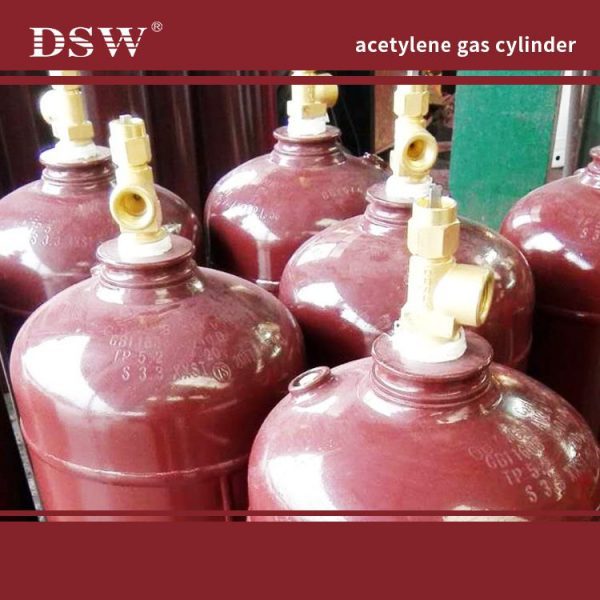Aluminum Cylinders with TPED/DOT/GB
DSW industry offers a wide range of aluminum cylinders for transporting and storing industrial gas, medical oxygen, food & beverage grade gas, and alternative aerospace gases.
Those gases are utilized mainly in the chemical, mining, and hospitality industries.
The applications Industry aluminum cylinders also store ultra-high purity gases for electronics manufacturing, specialty and calibration gas, industrial gas, medical oxygen, food and beverage grade CO2, SCUBA, fire & rescue, alternative fuel, and aerospace.
Aluminum Tanks Specification

TPED/DOT/GB Aluminum Gas Cylinders
Aluminum also has a lower chance of sparking, which makes it ideal for holding gas.
Because aluminum passes cylinder inspection so frequently, it’s less likely to rust, making it preferable to steel.
The three most significant advantages of aluminum’s numerous attractive qualities are its lightweight, toughness, and corrosion resistance.
Any operation that handles gas cylinders may have to lift dozens or even hundreds of canisters simultaneously.
One of the most important factors is how easily the tanks can be transported and stored.
The cylinders are also under tremendous pressure; any break or puncture could result in a hazardous situation.
Aluminum is sturdy and long-lasting enough to endure accidental knocks and hits without significant harm.
Last but not least, the materials included in gas cylinders can be very toxic and harm the metal, especially over time.
Aluminum alloys provide exceptional corrosion resistance for the metal canisters, the metal valves, and other parts utilized with the cylinders.

The benefits of aluminum alloy application on gas cylinders
Aluminum alloys offer several advantages over steel for gas cylinders: lighter weight, improved corrosion protection, low-temperature resistance, and the potential to be recycled at end-of-life.
Good Heat Transfer
Aluminum alloy has a thermal conductivity that is many times greater than steel. Aluminum alloy is second only to Copper in terms of thermal conductivity.
High Specific Strength
Aluminum is a common structural material with a lower weight and higher specific strength than steel.
Higher explicit strength materials can result in lighter equipment for portable gas cylinders. This reduces energy consumption and costs during transport.
Low-Temperature Resistance
The crystal structure of aluminum alloy is face-centered cubic.
Because the face-centered, cubic crystal structure exhibits a strong coordination ability, aluminum alloy gas cylinders are not prone to brittle cracks when used in shallow temperatures.
In addition, the strength and lightness of aluminum will not be affected, nor will its mechanical properties. Aluminum alloy can resist low temperatures down to -269°C without special requirements.



The manufacturing process of aluminum bottle
Punching and drawing method
The aluminum alloy seamless gas tube is formed by heating the aluminum billet and punching it into a short and thick cup, then drawing and closiitcup. This is the primary method of manufacturing aluminum alloy seamless gas tanks.
Cold extrusion
Cold extrusion refers to the process of creating seamless aluminum alloy gas bottles via cold extrusion of billet and subsequent closure. This technique has straightforward procedures and low costs; however, larger tonnage presses are required for this processing method.
Punching and Stretching Method
Deep drawing refers to drawing an aluminum alloy plate into a long cup-shaped part and then closing off one end. While its wall thickness can be uniform, its material utilization rate and process complexity are low and costs high compared to alternative manufacturing techniques, leading to limited use among manufacturers.
Spinning method
The spinning method refers to gas bottles manufactured using an aluminum alloy plate. With materials like aluminum alloy, spinning can help maximize the plastic potential of the material such that deformation can reach over 70%; one clamping and spinning session is enough to achieve results usually only achieved after multiple stretching and annealing sessions are necessary. T, stretch spinning is one of the methods for manufacturing aluminum bottles, particularly suitable for small-batch product production.
















